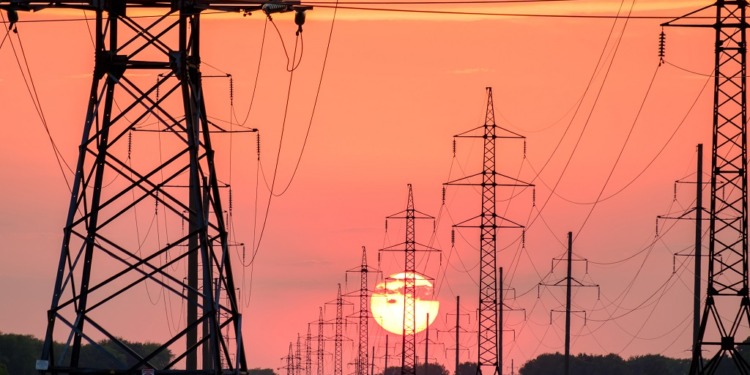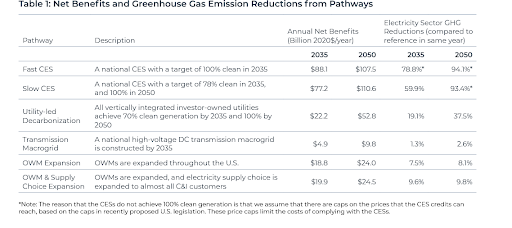A report released this week by the Clean Energy Buyers Institute (CEBI) and Resources for the Future (RFF) analyzes the effects of five policy pathways that could unlock IRA clean electricity incentives.
The Pathways Toward Grid Decarbonization: Impact and Opportunities for Energy Customers from Several U.S. Decarbonization Approaches report finds that while each policy pathway is impactful, three of the policy pathways accelerate greenhouse gas (GHG) emission reductions while also reducing costs:
- A national high-capacity transmission macrogrid would reduce national average retail electric rates by approximately 1% while reducing U.S. power-sector GHG emissions by an estimated 2.6 percent by 2050.
- Expansion of competition among electricity generators via organized wholesale electricity market (OWM) expansion would save $11 billion annually by 2035 and $14 billion annually by 2050 and reduce national power-sector GHG emissions by an estimated 8% by 2035.
- Expansion of electricity supply choice for commercial and industrial customers would reduce emissions a further 2% beyond the reduction achieved by expanding OWMs.
Policy-by-policy findings
Based on detailed modeling of the policies, compared to outcomes in the same years in a reference scenario with none of the policies, the report’s findings indicate:
While transmission investments, electricity market expansion, and supply choice expansion can provide billions of dollars of annual net benefits, they alone are insufficient to drive deep decarbonization. The other two policies assessed in the study – utility-led decarbonization and clean electricity standards – have stronger potential for that, locally or nationally.
According to Bryn Baker, Senior Director, Market, and Policy Innovation, Clean Energy Buyers Institute (CEBI) the recently passed landmark legislation has the potential to “drive unprecedented demand for clean energy and incentivize customers to continue to play a key role in accelerating its uptake.”
Furthermore, this report shows that expanding organized markets and transmission, in particular, will be critical to unlock IRA incentives by directly addressing barriers to bringing clean energy projects to market, reducing customer costs, and opening more avenues for customers to be the demand-side drivers of clean energy.
Daniel Shawhan, the lead author of the report, added that “investments and electricity market expansion have significant potential to save money, save lives, and reduce climate change, at the same time”.
Unlock IRA Incentives and customer demand
Transmission and organized market expansion, in particular, directly address several challenges slowing clean energy deployment and greater utilization of IRA investments. The transmission allows projects to connect to the grid and move power, and well-functioning, organized wholesale markets reduce production costs for all customers, provide a level playing field to integrate clean energy projects, and serve as a platform through which customers can more efficiently buy and sell clean energy.
Editor’s Note: The opinions expressed here by Impakter.com columnists are their own, not those of Impakter.com –In the Featured Photo: The grid. Photo credit: Unsplash.











